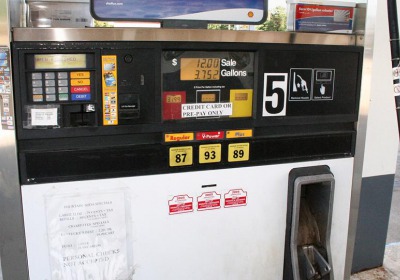Automakers try to stop increase in ethanol limit to 15 percent of gasoline
Mon, 11 Oct 2010Automakers are seeking to head off an EPA ruling that would allow gasoline to contain 15 percent ethanol, up from 10 percent now, and they've won some bipartisan congressional support.
The two main automaker industry lobbies have argued that the U.S. Department of Energy has done insufficient testing to assure that gasoline containing up to 15 percent ethanol won't harm vehicles.
Increased ethanol composition could affect engine durability, emissions, driveability and on-board diagnostics systems, the Association of International Automobile Manufacturers says.
In a Sept. 21 letter to the EPA, the other automaker lobby, the Alliance of Automobile Manufacturers, wrote: "It is in the best interest of all participants, including EPA, DOE and the ethanol industry, that the agency not rule prematurely on such a sizable change significantly impacting government, industry and a huge national market of consumers."
Tests being performed by the industry and academia probably will be completed within a year, said General Motors Co. spokeswoman Sharon Basel.
The EPA, responding to a request from ethanol makers, expects to make a final decision this fall on whether to raise the allowable ethanol portion of gasoline to 15 percent from the 10 percent limit set in 1979, spokeswoman Cathy Milbourn said.
The Energy Department soon will complete testing to determine the impact of higher ethanol blends on vehicles built after 2007, she said. The agency also is testing some vehicles built before 2007, as well as tanks and other fuel-handling equipment, to see how they might be affected by the higher ethanol blend, known as E15, Milbourn said.
"While results from the tests conducted to date look good, EPA will not make a final decision until DOE completes its current comprehensive testing of the newer vehicles," she said.
The Energy Department tests are the only ones of their size and scope that are looking at vehicle exhaust system durability, EPA Assistant Administrator Gina McCarthy said in a Sept. 17 letter to Rep. Henry Waxman, chairman of the House Energy and Commerce Committee.
Waxman, D-Calif., and three other lawmakers including the committee's senior Republican, Joe Barton of Texas, had asked the EPA to delay a decision until it "has sufficient test results to allow you to assure consumers that use of E15 will not harm their vehicles or engines."
In March 2009, a group of ethanol makers called Growth Energy asked the EPA to raise the ethanol limit, arguing that they were sandwiched between two federal standards.
The 2007 Energy Independence and Security Act sought to increase the amount of domestically produced fuel by requiring the production of 15 billion gallons of renewable fuel by 2015, up about 25 percent from today's levels. Most of that renewable fuel is ethanol, said Growth Energy spokesman Chris Thorne.
At the same time, though, ethanol makers are limited by the EPA's 10 percent limit in the amount of ethanol that can be mixed into gasoline. Most U.S. gasoline has 10 percent ethanol, he said. Many vehicles also can run on E85, an alternative fuel that is 85 percent ethanol and 15 percent gasoline.
Without an EPA increase in the ethanol blend, Growth Energy has argued, Congress would have to reduce the domestic fuel production mandate.
Paul Merrion contributed to this report
Ethanol: How much, when
1979: EPA allows gasoline with as much as 10% ethanol.
Dec. 2007: Energy Independence and Security Act sets annual ethanol production target of 15 billion gallons by 2015.
March 2009: Ethanol producers ask EPA to raise ethanol limit in gasoline to 15% so they can meet 2007 law.
Fall 2010: EPA decision is due on request from ethanol producers.
Sources: EPA, Growth Energy
By Neil Roland- Automotive News

